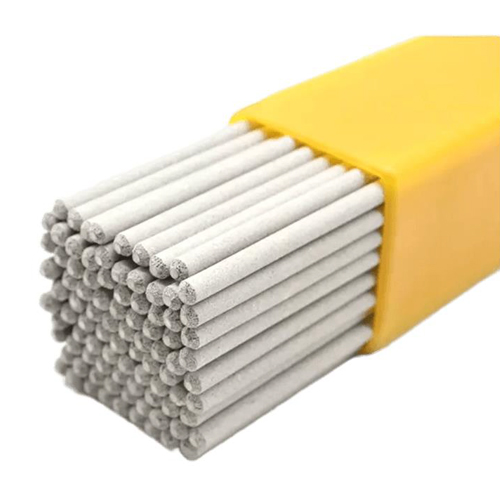

íshín-316LMRx has nominal composition (wt. %) of weld metal 19.5 Cr, 16.5 Ni, 6.5 Mn, 3 Mo, 0.2 N. This is normally a fully austenitic alloy with a maximum ferrite content of 0.5 FN. In critical applications for cryogenic and corrosion-resistant service, the purchaser should specify the maximum ferrite allowable. One of the primary uses of this electrode is for the joining of similar and dissimilar cryogenic steels for applications down to –269°C. Similar steels include stainless steels such as UNS S30453 and S31653. This electrode also exhibits good corrosion resistance in acids and seawater and is particularly suited to the corrosion conditions found in urea synthesis plants. It is also nonmagnetic. The high Mn-content of the alloy helps to stabilize the austenitic microstructure and aids in hot cracking resistance.
The covering of these electrodes is a modification of the -16 covering. On horizontal fillet welds, electrodes with a -17 covering tend to produce more of a spray arc and a finer rippled weld-bead surface than do those with the -16 coverings. A slower freezing slag of the -17 covering also permits improved handling characteristics when employing a drag technique. The bead shape on horizontal fillets is typically flat to concave with -17 covered electrodes as compared to flat to slightly convex with -16 covered electrodes. When making fillet welds in the vertical position with upward progression, the slower freezing slag of the -17 covered electrodes requires a slight weave technique to produce the proper bead shape. For this reason, the minimum leg-size fillet that can be properly made with a -17 covered electrode is larger than that for a -16 covered electrode. While these electrodes are designed for all-position operation, electrode sizes 4.8 mm and larger are not recommended for vertical or overhead welding.
Storage and Drying Conditions: Hydrogen can have adverse effects on welds in some steels under certain conditions. One source of this hydrogen is moisture in the electrode coverings. For this reason, the proper storage, treatment, and handling of electrodes are necessary.
Holding Ovens: 125°C–150°C.
Drying Conditions: 250°C–425°C for 1 hour prior to use.
CHEMICAL COMPOSITION OF UNDILUTED WELD
|
C |
Cr |
Ni |
Mo |
Nb+Ta |
Mn |
Si |
P |
S |
N |
Cu |
Others |
|
0.04 |
18.0-21.0 |
15.0-18.0 |
2.5-3.5 |
NS |
5.0-8.0 |
0.90 |
0.04 |
0.03 |
0.10-0.25 |
0.75 |
NS |
Single values are maxima, except where specified otherwise.
ALL-WELD-METAL MECHANICAL PROPERTIES
|
Tensile Strength, MPa |
Yield Strength, At 0.2% Offset, MPa |
Elongation % |
Lateral Expansion, mm |
Charpy V-Notch Impact at NS°C, Joules |
|
550 |
NS |
20 |
NS |
NS |
Single values are minimal.
ELECTRODE SIZE & WELDING CURRENT (AC and DCEP)
|
DIAMETER, mm |
LENGTH, mm |
Amperes |
|
2.50 |
350 |
65-90 |
|
3.15, 3.20 |
350 |
90-120 |
|
4.00 |
350 |
120-150 |
|
5.00 |
350 |
160-200 |
WARNING: Safety and health information is available from many sources, including, but not limited to Safety and Health Fact Sheets listed in A11.3, ANSI Z49.1 Safety in Welding, Cutting, and Allied Processes published by the American Welding Society, 8669 Doral Blvd., Suite 130, Doral, FL 33166., and applicable federal and state regulations. The Safety and Health Fact Sheets are revised, and additional sheets added periodically.
